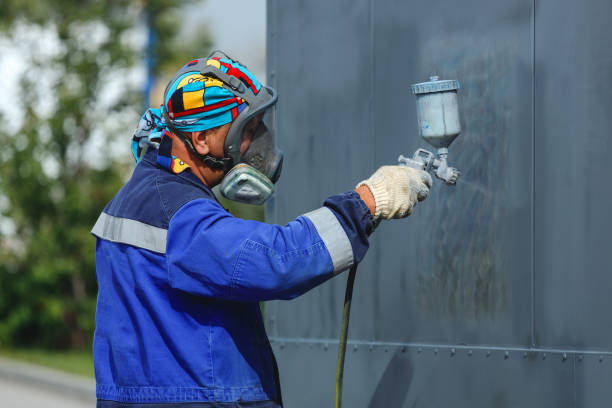Understanding The Role Of Additives In Industrial Painting

Every industrial paint formula painting is different. Based on the demands of your project you can choose one type of coating over the other. The major difference between coatings will be the kind additives for paints and coatings in the formulation. To enhance the quality of the finished product, additives can be used. These are only a few ways that additives can improve industrial painting.
Gloss
One area where additives can be evident is the level of gloss a given finish produces. Paint additives used in industrial painting can be adjusted upwards or down to create a glossier finish as needed. This is typically done with additives that improve the flow and level of coatings to create an even and reflective surface. It is also possible to do the opposite when you desire a matte finish in any way.
Leveling
The cure rate of the resin in the presence of air can be affected by additional additives. At first, the coating is typically uneven due to the irregular form of the components in the paint. The coating forms a tight seal when it is placed on the surface. The resin may dry too fast or unevenly and result in bubbles, fish eyes, or an orange peel texture. This is undesirable since it does not provide the same strength of resistance to cracking, chipping or peeling. Paint additives can be utilized to smoothen the flow of paint and make it dry faster so that the particles have enough time to bond and even out.
Stain Resistance
To avoid staining, some industrial paints contain additives for paints and coatings. These additives make the surface less permeable to chemicals that could create staining. It's possible to avoid discoloration and staining by sealing pores and creating stronger protection.
Hardness
A second set of additives may be added to improve the strength of the outer resin after it has been cured. The coating's hardness implies that any object that scratches the surface will not leave a mark. This property can prove to be extremely useful in places where industrial equipment could damage the surface of the coating and expose its layers below.
Surface Adhesion Additives
In some cases there are certain applications where it is essential that the paint is indestructible to paints and coatings applied. Certain municipalities employ antimicrobial additives for coatings to prevent graffiti from sticking to the original coating. This creates a challenge when it comes to repainting the surface. You may need an additive of a different type, called a wetting agent to ensure that the new coating adheres to the old resistant coating.
There are a variety of additives that can be utilized to alter the characteristics of industrial paints. Paint makers must consider balancing their compositions to obtain the most effective properties. Some additives can interfere with the other additives. It is essential to consider the effect of each additive on the surface that you are purchasing paint products. A painting expert can help you determine which paints are best suited to your specific needs. They will also describe what these properties means in relation to your use and long-term. For more information, contact Performance Painting today and speak to one of our experts in painting.

